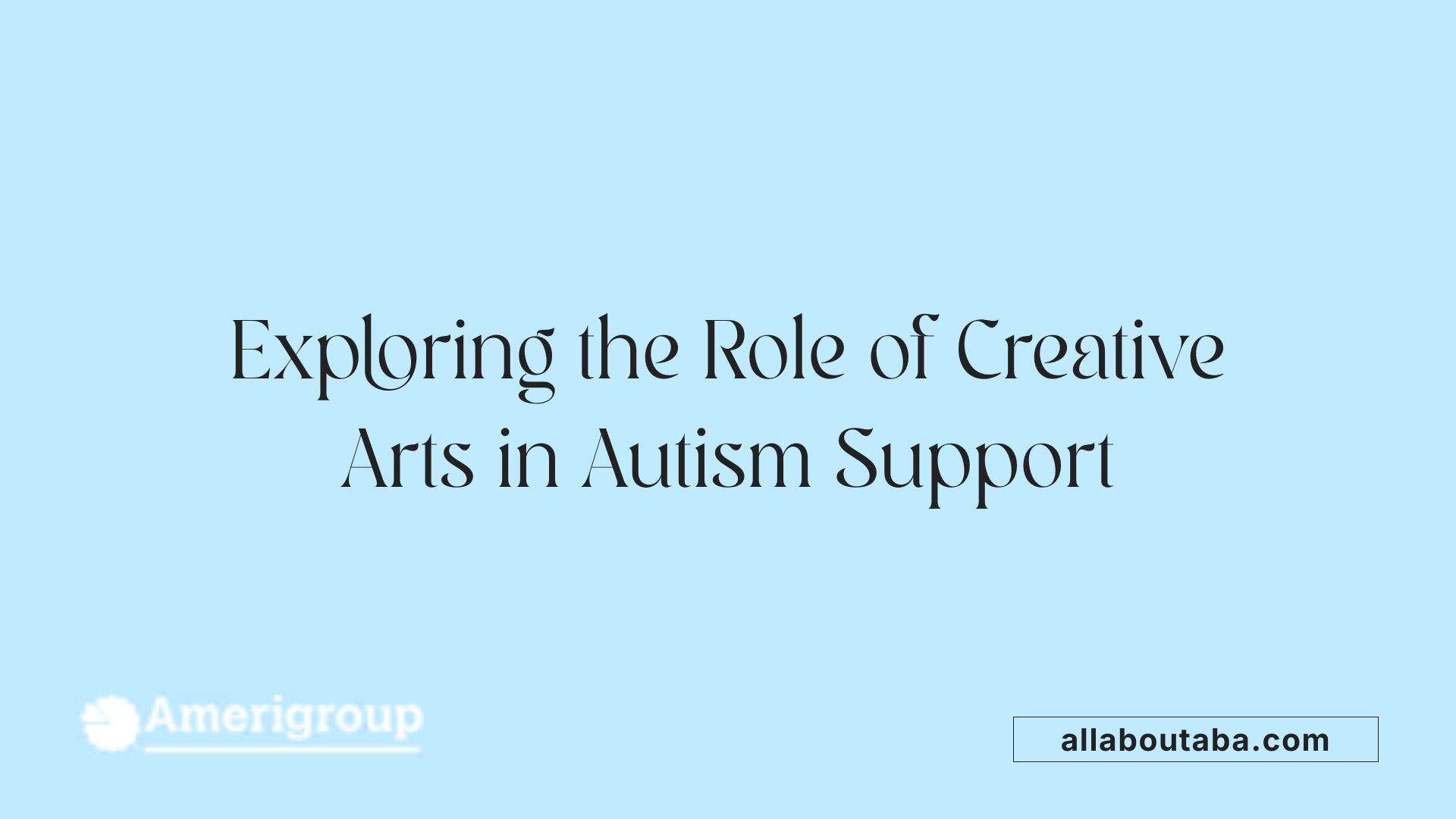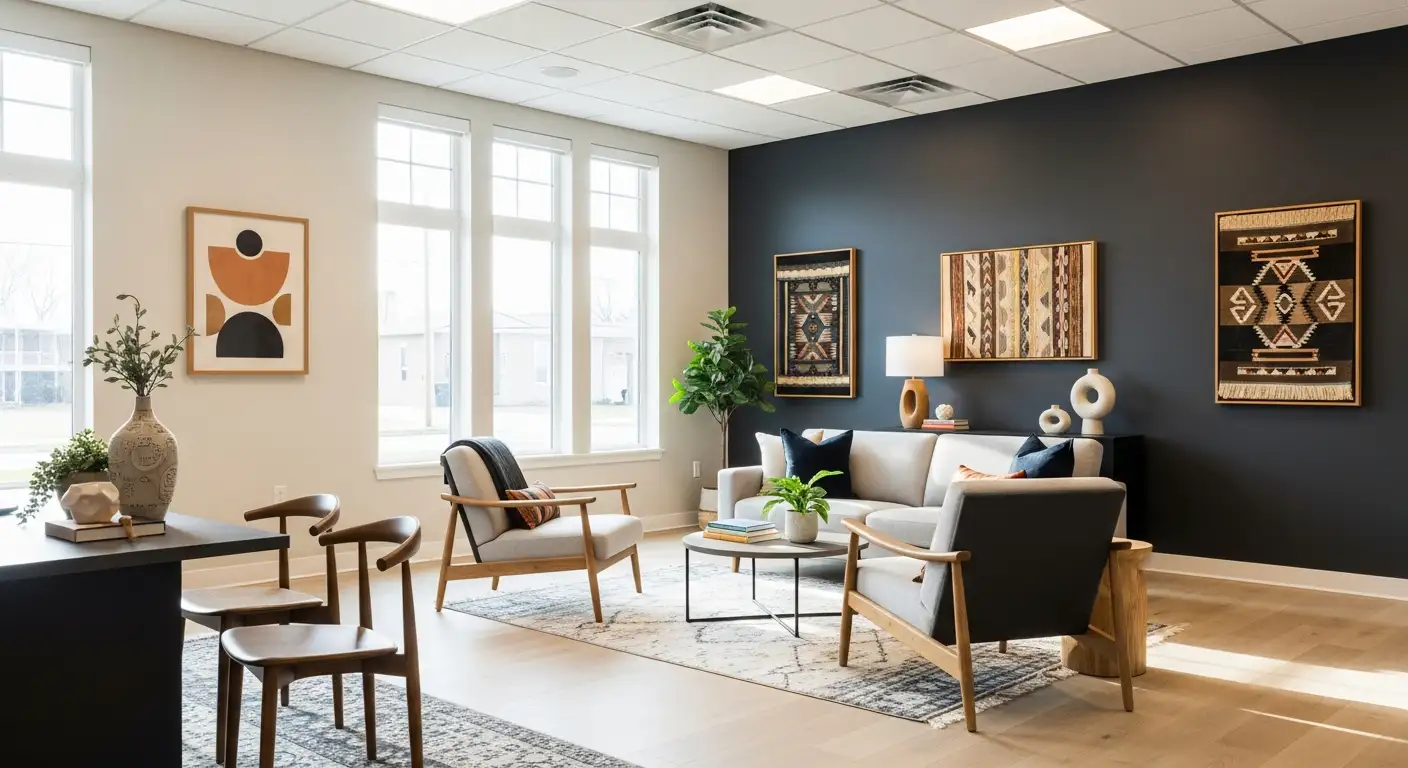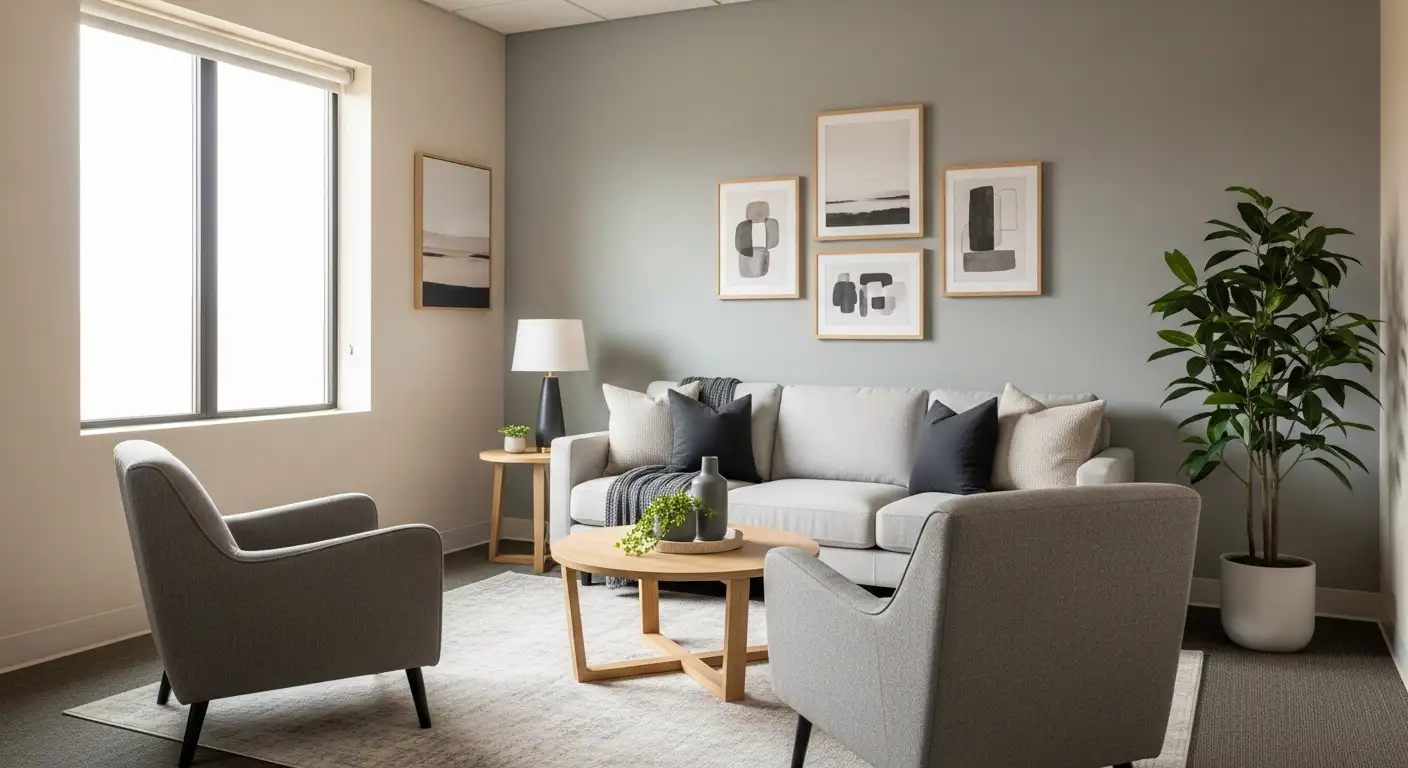Autism And Creative Arts As Emotional Expression Tools
Exploring New Avenues for Emotional and Social Growth
Creative arts therapies are increasingly recognized as vital tools for emotional expression and social development in children with autism spectrum disorder (ASD). Unlike traditional interventions, these therapies engage children through artistic and sensory experiences, offering alternative avenues to communicate feelings and improve social interaction. This article delves into the key creative arts approaches that serve as emotional expression tools for children with autism, highlighting their benefits and mechanisms for fostering personal growth and coping strategies.
Key Facts on Creative Arts and Autism Support
- Art therapy offers nonverbal emotional expression and reduces anxiety in autistic children.
- Activities like drawing and collaborative projects improve social skills such as initiating conversations and interpreting social cues.
- Art therapy helps develop coping strategies and emotional regulation through structured, sensory-rich tasks.
- It supports sensory modulation by leveraging visual, tactile, and auditory stimuli to improve social interaction.
- Progression from scribbling to representational drawing indicates improvements in attention, motor, and communication skills.
- Puppetry and collaborative art promote empathy, social interaction, and perspective-taking.
- Parent-mediated home-based art interventions are feasible and acceptable in resource-limited settings, supporting family involvement.
- Music therapy reduces core autism symptoms and improves social reciprocity, emotional expression, and communication.
- Musical engagement enhances turn-taking, joint attention, and nonverbal communication, broadening interaction channels.
- Meta-analyses confirm that creative arts therapies, especially music therapy, significantly improve behavioral, emotional, and social outcomes in autism.
1. Art Therapy: Visual Expression and Emotional Regulation

How does art therapy help autistic children express emotions?
Art therapy provides a valuable creative outlet for children with autism spectrum disorder (ASD) to express feelings nonverbally. Many children with ASD face challenges in verbal communication and struggle with recognizing or sharing their emotions. Through art, they can explore feelings in a natural and safe environment, which promotes emotional expression and relieves anxiety. This process supports improved self-esteem and encourages reflective self-awareness, allowing children to connect inner experiences with outer expression.
What social skills and communication improvements have been observed?
Research consistently shows that art therapy positively affects social skills among autistic children. Activities such as drawing, painting, and collaborative art projects encourage social interaction and cooperation with peers. For instance, art therapy sessions that focus on group work improve abilities to initiate conversations, maintain eye contact, and interpret social cues. By facilitating joint attention and shared goals, art therapy helps bridge some of the social reciprocity gaps characteristic of ASD.
In what ways does art therapy foster coping and emotional regulation?
Art therapy is effective at helping children develop coping strategies and regulate emotions. Structured art tasks guide children toward increased flexibility and focused behavior, fostering better stress management. The sensory aspects of art-making provide soothing effects and help with self-regulation challenges often observed in autism. Engaging in a creative process also offers a sense of control and accomplishment that can be calming and empowering for children navigating emotional challenges.
How does art therapy support sensory modulation and self-regulation?
Many children with ASD experience sensory processing difficulties, which can affect mood and social engagement. Art therapy's multisensory nature leverages visual, tactile, and sometimes auditory stimuli, offering opportunities for sensory learning. This helps children modulate their sensory responses and better regulate internal states. Addressing these sensory needs simultaneously supports improvements in social interaction and communication abilities.
What is the significance of artistic progression from scribbling to representational drawing?
A notable developmental milestone supported by art therapy is the transition from random scribbling to more structured, representational drawing. This progression reflects improvements in attention, cognitive organization, and motor skills. As children advance in their artistic capabilities, they also enhance behavioral and communication competencies. This developmental growth can foster a better understanding of the world and facilitate nonverbal storytelling, further boosting social and emotional development.
How are puppetry and collaborative art used to promote empathy and social interaction?
Therapeutic techniques such as puppetry extend art therapy's benefits by enhancing socio-emotional skills. Puppetry allows children to visualize and act out feelings and social scenarios, improving emotional empathy and perspective-taking. Collaborative art projects encourage teamwork, sharing, and the development of interpersonal skills. Both methods help reduce anxiety and promote social engagement in a playful, supportive context.
What role do parent-mediated home-based art interventions play in resource-limited settings?
In settings with limited therapeutic resources, such as parts of India, parent-mediated home-based art therapy has proven feasible and acceptable. These interventions empower caregivers to use art activities at home to support their child's emotional and social growth. Additionally, involving parents helps reduce parental stress by providing tools to understand and engage with their children effectively. This family-centered approach enhances accessibility and continuity of care, contributing to better long-term outcomes.
Through these multifaceted approaches, art therapy stands out as a comprehensive and nurturing strategy for supporting autistic children. It improves emotional expression, social skills, and behavioral flexibility while addressing sensory regulation needs. By facilitating artistic development and collaborative experiences, art therapy opens new pathways for communication and connection for children facing the unique challenges of ASD.
2. Music Therapy: Enhancing Communication and Emotional Connectivity

How is music used as a creative arts therapy approach for autism?
Music therapy is a specialized form of creative arts therapy that uses music-based interventions to promote psychological and social well-being in autistic children. Through singing, playing instruments, rhythmic activities, and listening exercises, music therapy creates a natural setting for children to engage in creative expression and social interaction. This nonverbal and highly engaging medium aligns well with the expressive needs and strengths of many autistic individuals.
How effective is music therapy in reducing autism symptom severity?
Research, including meta-analyses of recent reviews, consistently shows that music therapy significantly reduces the severity of autism symptoms. Among various forms of creative arts therapy, music therapy stands out for its ability to improve core deficits related to autism spectrum disorder (ASD), such as social reciprocity and communication challenges. These improvements translate into more adaptive behaviors and enhanced daily functioning.
What improvements are observed in social reciprocity and emotional expression?
Music therapy promotes turn-taking, joint attention, and shared emotional experiences. These elements are foundational for social reciprocity — the mutual exchange of social cues and responses. Children participating in music therapy often demonstrate increased ability to initiate interactions, maintain eye contact, and respond to social cues.
Emotionally, music serves as a channel for expressing feelings that may be difficult to verbalize. Participants show improved emotional expression and recognition, which contribute to greater emotional connectivity with peers and caregivers.
How does musical engagement support communication?
Musical activities engage multiple communication pathways simultaneously. Rhythm helps regulate timing in conversations, melody supports vocal expression, and group music-making encourages nonverbal communication. This multifaceted engagement helps autistic children broaden their communication channels beyond spoken language, facilitating greater expressive and receptive communication skills.
What is the impact of music therapy on behavior, emotional coping, and overall functioning?
Music therapy assists autistic children in developing effective coping strategies to manage anxiety and sensory overload. Structured musical activities provide predictable and comforting routines.
Behaviorally, music therapy encourages flexibility through movement and improvisation, which can reduce repetitive behaviors. Emotional coping improves via music-facilitated relaxation and expressive outlets.
Overall functioning benefits include enhanced attention, cooperative play, and emotional regulation, contributing to improved quality of life.
What evidence supports the benefits of music therapy?
Meta-analyses synthesize data from multiple studies, consistently indicating that music therapy has a positive, measurable effect on autism symptoms and functional skills. Out of 20 reviewed studies assessing various creative arts therapies for autism, 18 reported positive outcomes — music therapy is frequently highlighted as a highly effective and evidence-based intervention.
How does music therapy broaden communication channels and social interaction?
By bridging verbal and nonverbal communication through melody, rhythm, and group participation, music therapy enhances expressive possibilities. It enables children with autism to connect socially in ways that may be otherwise limited by traditional speech. These broadened communication channels support peer cooperation and sharing in inclusive environments.
| Aspect | Description | Impact on Autism Spectrum Disorder (ASD) |
|---|---|---|
| Music-Based Interventions | Singing, instrument playing, rhythmic and listening exercises | Engages multiple communication pathways and sensory modalities |
| Symptom Severity Reduction | Meta-analyses highlight significant decreases in core autism symptoms | Enhances social reciprocity and communication skills |
| Social Reciprocity Enhancements | Improved eye contact, turn-taking, joint attention | Facilitates fuller participation in social settings |
| Emotional Expression | Music provides a nonverbal outlet for feelings | Increases emotional connectivity and self-awareness |
| Behavioral and Emotional Coping | Structured music therapy supports routine and reduces repetitive behaviors | Improves flexibility, decreases anxiety |
| Overall Functioning | Boosts attention, cooperative play, and emotional regulation | Enhances quality of life and independence |
| Communication Channels | Combines verbal, nonverbal, and sensory communication elements | Broadens expressive and receptive communication |
Understanding Applied Behavior Analysis (ABA) Therapy

What is Creative Arts Therapy and How Is It Used with Autistic Children?
Creative arts therapy encompasses various expressive modalities such as art-making, dance/movement, drama, music, psychodrama, and poetry. It aims to support psychological and social well-being through creative self-expression. For autistic children, these therapies serve as alternative or complementary interventions alongside traditional treatments.
Research confirms that creative arts therapy allows autistic children to communicate and engage with peers in natural, supportive settings, without adverse side effects. Through these expressive processes, children can find unique ways to convey feelings and experiences that might be difficult to express verbally.
What Are the Goals and Techniques of Creative Arts Therapy for Autism?
The therapy focuses on fostering emotional expression, enhancing social interaction, and developing communication skills. Specific goals include helping children with autism:
- Develop effective coping strategies
- Broaden communication channels beyond verbal speech
- Improve emotional regulation and self-esteem
- Enhance social reciprocity and peer cooperation
Techniques vary by modality; for example, art therapy involves guided art creation leading from simple scribbling to representational drawing. This progression assists in behavioral and communication development. Music therapy uses sound and rhythm to reduce symptom severity and promotes overall functioning. Drama and puppetry offer symbolic tools to express complex emotions and improve empathic understanding.
What Evidence Supports the Benefits of Creative Arts Therapy for Autism?
Most studies reviewed (18 out of 20) report positive outcomes related to autism symptoms. Benefits documented include:
- Improved social interaction and play-based cooperation
- Better emotional expression and behavioral flexibility
- Enhanced body functions and sensory regulation
- Increased quality of life and reduced anxiety
Meta-analyses particularly highlight music therapy as significantly effective in reducing symptom severity and boosting functional skills.
How Does Art Therapy Specifically Promote Development in Children with Autism?
Art therapy provides opportunities for visual and sensory learning, which align well with many autistic children's strengths. It addresses challenges like nonverbal communication deficits by encouraging children to respond to and create social cues through artistic expression.
Emotional regulation is another target; art therapy helps children process feelings nonverbally, often reducing anxiety. The therapy also supports self-regulation, attention focus, and promotes verbal expression as children translate art into communication.
Innovative techniques such as puppetry further nurture empathy and socio-emotional growth, fostering deeper peer interaction.
What Makes Creative Arts Therapies Practical in Resource-Limited Settings?
Research indicates that parent-mediated, home-based art therapy interventions are feasible and well accepted in places like India, offering support to families and reducing parental stress. This family-centered approach integrates therapy into daily life, creating sustainable benefits.
Overall, creative arts therapies provide a valuable, evidence-backed option that enhances social, emotional, and communication skills in autistic children, complementing standard interventions and contributing to improved life outcomes.
Bridging Therapy Approaches for Holistic Autism Support
Creative arts therapies such as art and music therapy offer dynamic and accessible emotional expression tools that complement traditional interventions like Applied Behavior Analysis. These approaches enrich the therapeutic landscape by enabling autistic children to communicate and regulate emotions in multisensory, social, and creative contexts. While ABA remains a cornerstone for individualized behavior and skill development, incorporating creative arts therapies can address emotional and social dimensions in ways that foster empathy, self-esteem, and coping skills. Together, they provide a holistic framework for managing autism that prioritizes both functional gains and emotional well-being, ultimately enhancing quality of life and social integration for individuals on the autism spectrum.
References
- Creative arts therapy for autistic children: A systematic review
- Art Therapy as Social skills and Emotional Regulation ...
- Family‐centered creative arts therapies for children with ...
- What is an ABA Therapist?
- Understanding Your Child's ABA Therapy Providers
- What Do ABA Therapists Do?
- The effectiveness of applied behavior analysis program ...
- Applied Behavior Analysis (ABA)
- Applied Behavior Analysis (ABA)
- Treatment and Intervention for Autism Spectrum Disorder
Other articles
Recent articles

Cultural Perspectives On Autism Around The World

Autism And Creative Arts As Emotional Expression Tools

Developing Emotional Regulation Skills In Autistic Teens

Best Sensory-Friendly Lighting Solutions For Autism

Cognitive Behavioral Therapy Adaptations For Autism

Best Practices For Autism-Friendly Movie Screenings

Autism And Eating Challenges Beyond Picky Eating

Best Practices For Autism-Friendly Public Transport Design

Best Ways To Foster Collaboration Between Parents And Schools For Autism Support

Supporting Autistic Children During Transitions Between Activities

The Role Of Teachers In Fostering Autism Peer Acceptance

Using Art Therapy To Support Children With Autism

Autism And Strategies For Addressing Sensory Defensiveness

Autism And The Benefits Of Structured Leisure Activities

How To Support Autistic Students During Exam Season

Autism And Goal Setting For Personal Growth

How To Use Gamification In Autism Learning Programs

How Schools Can Reduce Bullying Of Autistic Students

Early Intervention Strategies For Autism Spectrum Disorder

The Role Of Therapists In Autism Life Skills Coaching

How To Support Autistic Individuals In Crisis Situations

Autism And Self-Care Routines For Stress Management

Understanding Echolalia And Its Role In Autism Communication

Autism And Fine Arts Education Benefits

The Impact Of Multisensory Learning On Autism Education

How Family Counseling Supports Autism Household Dynamics

Best Practices For Inclusive Playgrounds For Autism

Best Practices For Autism-Friendly Shopping Centers

How Autism Affects Fine Motor Skill Development

Best Ways To Introduce Sensory Activities Into Daily Routines

How Sports Teams Can Be Inclusive Of Autistic Players

Autism And Strategies For Building Workplace Resilience

Autism And The Impact Of Hormonal Changes During Puberty

How To Support Autistic Students In Foreign Language Classes

Best Ways To Teach Money Skills To Teens With Autism

Supporting Siblings Of Children With Autism

Autism And Co-Occurring Gastrointestinal Disorders

The Role Of Art Projects In Autism Sensory Integration

How Schools Can Incorporate Sensory Break Spaces

Best Practices For Autism Sensory Regulation At School

Autism And Strategies For Teaching Organizational Skills

Understanding The Relationship Between Autism And Anxiety Disorders

Autism And Life Planning For Long-Term Care

Exploring Visual Supports In Autism Education

Ways To Encourage Social Interaction In Children With Autism

The Connection Between Autism And Dyscalculia

The Role Of Occupational Therapy In Transition Planning For Autism

The Role Of Physical Therapists In Autism Motor Skills Support

How To Teach Decision-Making Skills To Autistic Young Adults

The Connection Between Autism And Epilepsy

Best Practices For Transitioning Autistic Children Into New Schools

Autism And Time Management Challenges In Adulthood

The Role Of Visual Arts In Autism Communication Development

How To Address Tactile Defensiveness In Autism

Best Practices For Telehealth Autism Therapy

How To Help Autistic Children Develop Friendship Skills

How Schools Can Support Autistic Students In Career Prep

Best Strategies For Autism-Friendly Event Planning

Understanding Noncontingent Reinforcement In Autism Behavior Plans

How Drama Therapy Benefits Autistic Individuals

Best Practices For Autism-Friendly Fitness And Recreation Centers

Best Ways To Promote Healthy Social Media Use For Autistic Teens

How To Help Autistic Children Cope With Public Speaking

Autism And Strategies For Managing Unexpected Changes

Best Podcasts About Autism For Parents And Educators

Autism And The Impact Of Seasonal Changes On Behavior

The Role Of Diet In Managing Co-Occurring Conditions With Autism

Sleep Challenges In Autism And Practical Solutions

Best Ways To Build Daily Routines For Autistic Children

Best Practices For Supporting Autistic Entrepreneurs

Autism And Strategies For Navigating Large Social Gatherings

Adaptive Sports And Recreational Activities For People With Autism

Autism And The Benefits Of Story-Based Learning Activities

Understanding The Role Of Play In Autism Development

Autism And The Impact Of Environmental Noise On Learning

How To Create Autism-Friendly Community Spaces

Autism And Chronic Health Conditions: What To Know

The Role Of Care Managers In Autism Life Planning

How To Teach Social Boundaries To Autistic Children

How Autistic Individuals Experience Empathy Differently

How To Support Autistic Employees In Remote Work Settings

Autism And The Relationship Between Motor Skills And Learning

How To Create Community Resource Guides For Autism Families

How To Teach Daily Living Skills To Autistic Teens

Autism And The Impact Of Mind-Body Practices On Stress Reduction

Autism And The Benefits Of Outdoor Group Activities

How To Create Autism-Friendly Sensory Paths In Schools

Best Practices For Autism-Friendly Park And Recreation Areas

Autism And Strategies For Reducing School Refusal

Supporting Autistic Individuals In Public Speaking

The Role Of Diet In Managing Autism Symptoms

The Benefits Of Gardening Clubs For Autism Social Development

How To Prepare Autistic Children For Dental Visits

Autism And Employment: Career Paths That Work

Best Practices For Autism-Friendly Hotels And Lodging

The Impact Of Screen Time On Autism Development

Autism Screening Tools For Early Childhood

The Role Of Physical Exercise In Autism Therapy

Best Strategies For Supporting Autistic College Students

The Role Of Technology In Autism Early Detection
We’re All About You, Your Family, and Your Child

